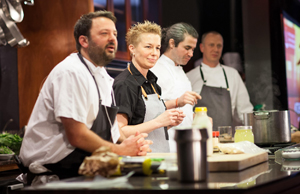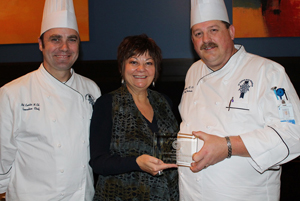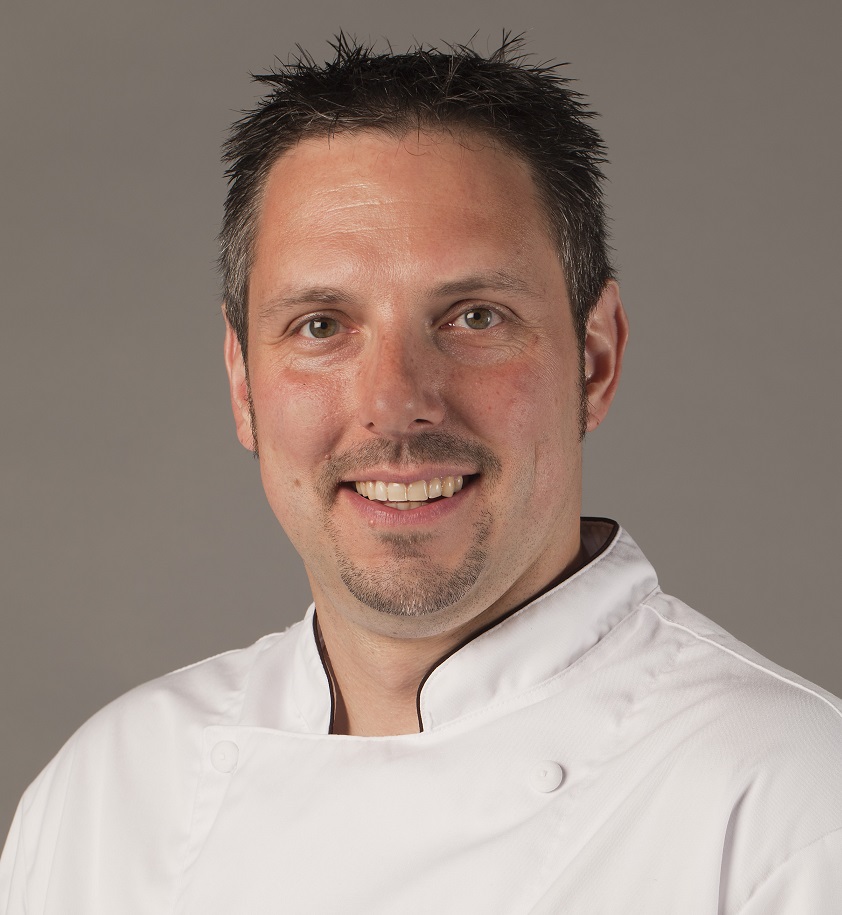NECI Graduate Quinn Named “Chopped” Champion, Donates Winnings to C-CAP
 Not every chef who steps into the kitchen is ready for the challenge of competition in front of the camera. New England Culinary Institute graduate Sean Quinn (’01) recently beat out the competition on Food Network’s culinary-competition show, “Chopped.” Quinn is also a graduate of C-CAP (Careers through Culinary Arts Program), designed to prepare high-school students for college and career opportunities in the hospitality industry. The scholarship he received through C-CAP allowed him to attend New England Culinary Institute and eventually led him to become executive chef at Chadwick’s in Brooklyn, N.Y., where he has been for seven years.
Not every chef who steps into the kitchen is ready for the challenge of competition in front of the camera. New England Culinary Institute graduate Sean Quinn (’01) recently beat out the competition on Food Network’s culinary-competition show, “Chopped.” Quinn is also a graduate of C-CAP (Careers through Culinary Arts Program), designed to prepare high-school students for college and career opportunities in the hospitality industry. The scholarship he received through C-CAP allowed him to attend New England Culinary Institute and eventually led him to become executive chef at Chadwick’s in Brooklyn, N.Y., where he has been for seven years.
As “Chopped” champion, Quinn received $10,000, which he donated to the C-CAP program to help others pursue their education in the culinary arts.
Winner of “Chopped” in 2012, NECI Executive Chef Jean-Louis Gerin congratulated Quinn on his accomplishment: “As a ‘Chopped’ champion, I know the intensity and pressure one is under when opening the mystery basket. I won by staying focused, disciplined and true to the fundamentals of cooking. The education that Sean received at NECI with intensive hands-on learning and a focus on fundamentals was a part of his win, too. Congratulations to him.”

 The American Personal & Private Chef Association (APPCA) recently honored four chefs with Awards of Excellence at the 2013 APPCA Personal Chef Summit at Stratford University in Baltimore.
The American Personal & Private Chef Association (APPCA) recently honored four chefs with Awards of Excellence at the 2013 APPCA Personal Chef Summit at Stratford University in Baltimore. Why culinary teachers should consider operating a personal-chef business as an adjunct career. It’s not only for the additional income.
Why culinary teachers should consider operating a personal-chef business as an adjunct career. It’s not only for the additional income. At this year’s Worlds of Flavor Conference at the CIA in the Napa Valley, presenting chefs from the best kitchens in Western Europe, Asia, Latin America and the United States stressed developing a sense of place in one’s cuisine.
At this year’s Worlds of Flavor Conference at the CIA in the Napa Valley, presenting chefs from the best kitchens in Western Europe, Asia, Latin America and the United States stressed developing a sense of place in one’s cuisine. Annual dinner for national foodservice media, prepared by students, recognizes an exemplary professional U.S. culinary-arts program.
Annual dinner for national foodservice media, prepared by students, recognizes an exemplary professional U.S. culinary-arts program.  Several foodservice educators contributed to the American Culinary Federation’s chef team’s second-place win among 12 teams in Dubai.
Several foodservice educators contributed to the American Culinary Federation’s chef team’s second-place win among 12 teams in Dubai. Chef Jason Ziobrowski of InHarvest inspires culinary grads of Victory Trade School.
Chef Jason Ziobrowski of InHarvest inspires culinary grads of Victory Trade School. Through the free videos he helps produce for Unilever, Steve Jilleba stresses the need among current and future cooks to understand culinary origins and the impulses that inspired authentic flavors around the globe.
Through the free videos he helps produce for Unilever, Steve Jilleba stresses the need among current and future cooks to understand culinary origins and the impulses that inspired authentic flavors around the globe. Through culinary and reflective journaling, students can become empowered to consider broadly and deeply what they are learning and what they need to do in the future. Your role is simply to encourage them to write.
Through culinary and reflective journaling, students can become empowered to consider broadly and deeply what they are learning and what they need to do in the future. Your role is simply to encourage them to write.